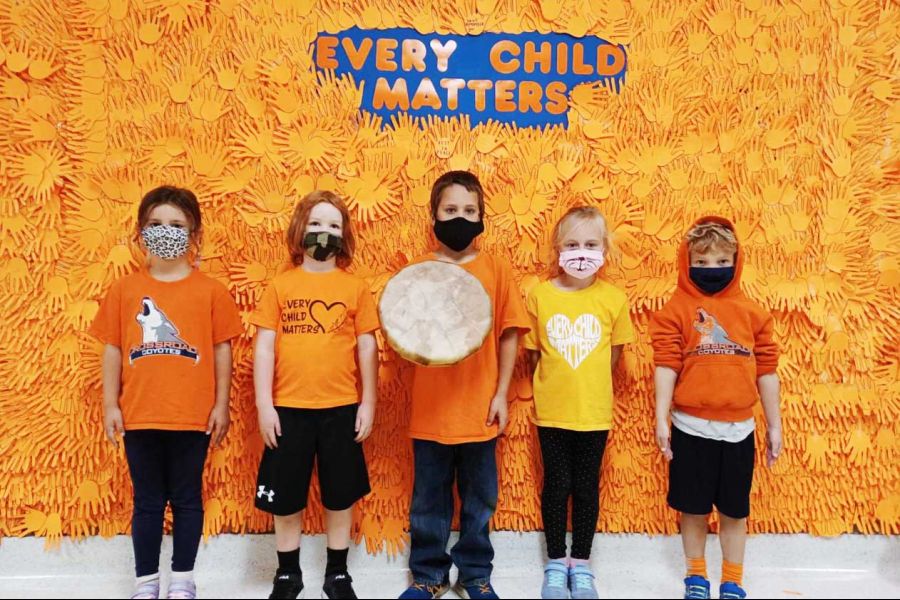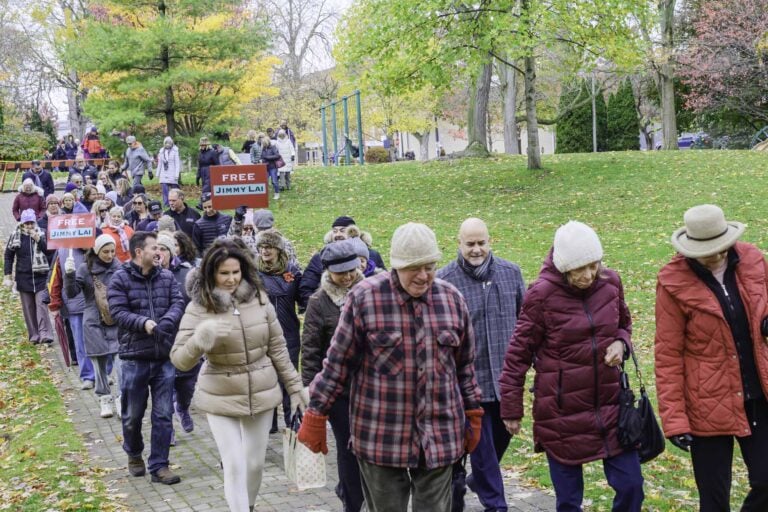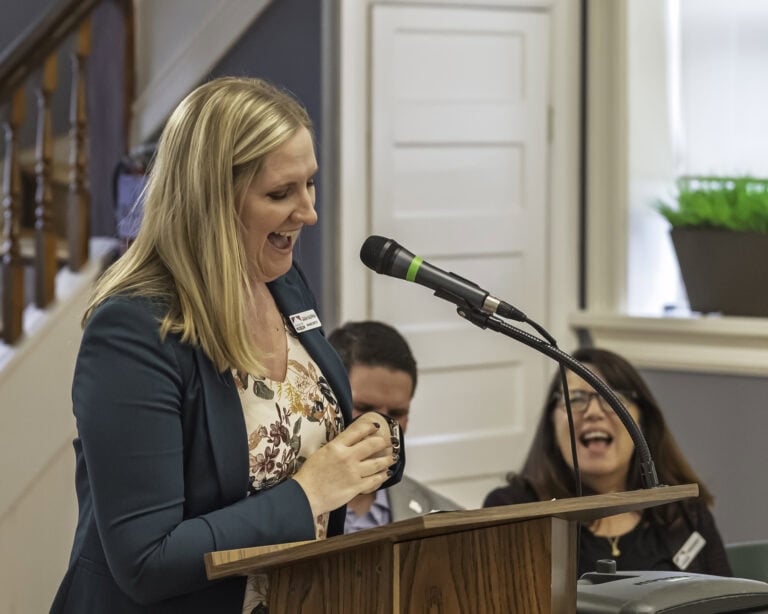Virgil school involves all staff and students in encouraging compassion, empathy
Inside Crossroads Public School, 6,509 orange hands adorn one prominent wall, each hand created by the students and staff to represent Indigenous children who died attending Canada's residential schools.
“We all get shivers looking at it. It has brought many people in this building to tears and it’s really had a profound impact,” principal Kate Fish said in an interview.
Every single student in the school has been involved in creating the display, Fish said.
“Even just talking about it now it makes me emotional and proud and gives me disdain and gives me a very heavy feeling in my heart,” she said.
“But at the same time seeing the students' reactions to it as well as the dialogue it has generated in classrooms is — it’s overwhelming, it really truly is overwhelming.”
The 6,509 figure is not the official count of children's graves found so far but is a number that has been popularly used to represent the graves found and graves too be found across the country.
Fish said the school was a sea of orange shirts on Sept. 30 as part of the first National Day for Truth and Reconciliation.
“The really cool thing was not just seeing the kids wearing their orange shirts but parents dropping their kids off wearing orange shirts as well,” she said.
“One mother had a shirt on that said ‘Our Home is Native Land.’ ”
Fish said it’s amazing to see kids engaged in such an important issue – something many older Canadians never experienced in school.
“You see these kids engaging in the conversation with compassion and empathy and a sense of social justice that I never experienced as a student growing up. It’s inspiring, to be honest. It’s inspiring and it makes me feel hopeful for the future,” the principal said.
“We’re all coming at it from a place of lack of education. There is a huge amount of work to front load for us to make sure we’re doing it correctly and doing it justice and being sensitive.”
Fish said one of her students said the initiative made her happy and sad, telling the principal, in effect, “It makes me happy that we’re doing something about this but it makes me sad that we have to do it at all.”
The display is part of a larger project in the school to keep education about residential schools and Indigenous Peoples continuing long after Sept. 30 has passed, said Fish.
“We really try and weave Indigenous education through the curriculum throughout the entire year,” she said.
The school is using a number of resources to educate its students on residential schools and Indigenous history.
One great resource is Phylis Webstad’s book “The Orange Shirt Story,” Fish said and noted the challenge of ensuring the educational tools are age-appropriate and develop as students mature.
“Orange Shirt Day gave us a really great starting point because it’s already in kid-friendly language,” she said.
“Language changes according to the age of the student. You wouldn’t use words like ‘abuse’ in a really early grade, you use words like mistreatment or treated poorly. But as they get older you start using terminology like that.”
Fish said the school is also using “When We Were Alone” by David Robertson, “I Am Not a Number” by Jenny Kay Dupuis and Kathy Kacer with illustrations by Gillian Newland, and “Fatty Legs” by Margaret-Olemaun Pokiak-Fenton & Christy Jordan-Fenton, among other books.
The school also has been showing students films and documentaries about residential schools.
Fish said a quote from Sen. Murrary Sinclair, chair of the Truth and Reconciliation Commission, has been a driving theme for her during this time. He noted: “Education got us into this mess and education can get us out.”
And that theme was one reason Fish was glad the kids were in school on Sept. 30, though she understood the desire for many Indigenous and non-Indigenous parents to have their kids out of class that day.
“The systems we have created are the ones that are causing the problems. So, by requiring Indigenous people to continuously engage in those systems it almost feels like you are re-perpetrating the problem,” Fish said.
But having children in school made sure they were being educated on reconciliation and residential schools on Sept. 30, which, unfortunately, is not a guarantee many students would have had if they were at home, Fish said.
“It allows us the opportunity to give the students experience and exposure that they wouldn’t necessarily receive elsewhere. It ensures that it’s happening for the right purposes, but I completely understand the other perspective of it,” Fish said.











